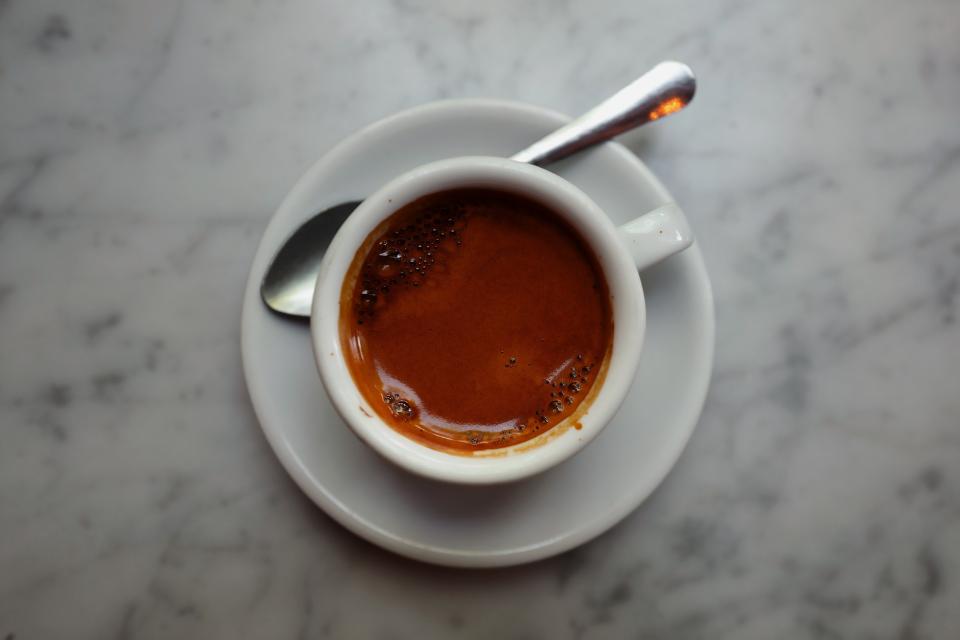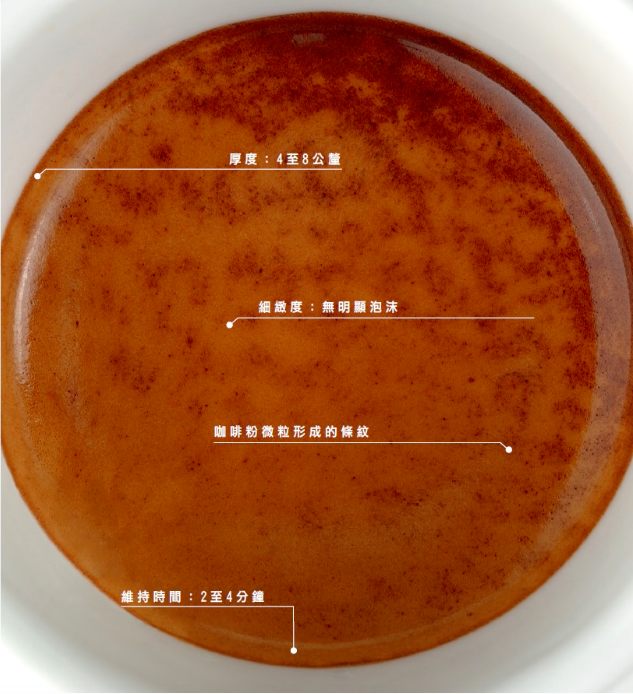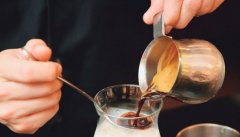Taste Espresso espresso with hearing, sight and smell!
For professional baristas, please follow the coffee workshop (Wechat official account cafe_style)
"hearing" is the least used senses in the process of tasting coffee. It is important to note, however, that making the right judgment in a noisy environment full of disturbing sounds can quickly lead to sensory fatigue. The noise itself affects our concentration, and when tasting coffee, it is obvious that we should concentrate on the coffee in the cup.

Vision is the main sense that we use to understand the world, and coffee tasting is bound to be affected by the appearance of coffee. What we really need to pay attention to at this stage is the foam Crema "Krima" on the surface of coffee, because this layer of foam provides important information about the skill of brewing coffee.
Foam is not only a feature of espresso, but also preserves the aroma of the coffee in the cup and prevents the aroma from drifting into the air. So this bubble acts like some kind of protective layer. The color of the foam ranges from dark brown to light brown, and even has a reddish hue. The so-called tiger spots, the dark stripes on the foam, are caused by coffee powder particles in the coffee, indicating that this cup of espresso is brewed in a perfect way.

You can judge whether your brewing coffee is ideal or not according to the coffee picture above. The visual evaluation of coffee is followed by the use of smell to explore the aroma of espresso.
Be sure to "break" the foam by stirring the coffee with a spoon to get a clearer impression of the smell of the coffee. These smells can be weak or strong, elegant and clean, and vice versa. For example, a good cup of Arabica coffee may have aromas of caramel, bread and honey, with a hint of citrus fruit and flowers. As for the uncomfortable smell, it may be sour, musty, wood or sack.

If the foam of espresso is light in color, it means that the extraction is insufficient and the taste will be sour and insipid. This is because the temperature and / or pressure is too low, or the extraction time is too short, sometimes because the coffee powder is insufficient or the grinding particles are too coarse, causing hot water to flow through the coffee powder too fast. If the foam is dark and has white spots in the middle, it is a typical over-extracted coffee, which is high in caffeine and tastes bitter. The reason may be that the temperature and / or pressure is too high, or the extraction time is too long, or too much coffee powder or too fine grinding particles hinder the flow of hot water.
Important Notice :
前街咖啡 FrontStreet Coffee has moved to new addredd:
FrontStreet Coffee Address: 315,Donghua East Road,GuangZhou
Tel:020 38364473
- Prev

Coffee champion Lim Dong-Won teaches the creative formula of private coffee
For professional baristas, please follow the coffee workshop (Wechat official account cafe_style) GABEE. Lim Dong-Won of the cafe uses espresso (espresso) to teach three creative coffees. Iced latte-dancing coffee uses a trick to make coffee and milk black and white. Shake the cup and you will see the coffee dancing on the milk. Material: espresso 60c
- Next

Teach you how to easily make a special iced coffee "ice coffee" at home.
Communication of professional baristas Please pay attention to the coffee workshop (official Wechat account cafe_style). Do you also want a cup of iced coffee full of spirit when you go to work in the morning? there doesn't seem to be much choice except the freshwater iced coffee in the breakfast shop. in fact, you can make it before you go to bed the night before, or you can easily have a good iced coffee. What we want to introduce today is cinnamon milk iced coffee (such as
Related
- What is the meaning of lactic acid fermentation with coffee bean treatment?
- How to judge the state of foam by sound?
- How does the latte pull out the unicorn pattern? Come to get for a little trick to improve the flower pull!
- Will flower pulling affect the taste of the latte?
- Do you know the history of coffee?
- The difference between honey treatment and sun washing what is raisin honey treatment?
- What kind of milk can a novice use to make coffee foam to keep the foam longer? The correct method and skills of milking tutorial sharing
- Why do washed coffee beans taste sour? Flavor characteristics of washed Coffee
- Introduction to the skill of how to practice the size and height of water injection around the circle of hand-brewed coffee
- How do beginners practice coffee flower drawing from scratch?

